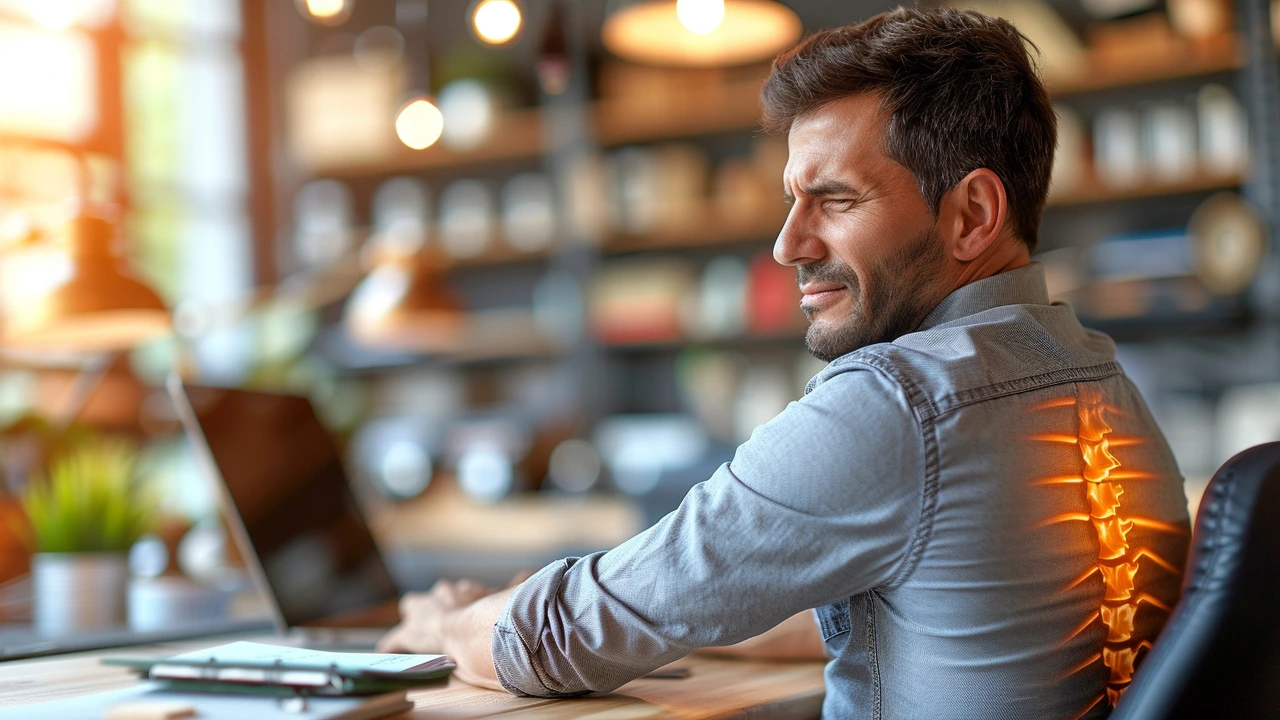
Delving Deep into the Rolfing Universe
"Rolfing"? Sounds like a sport, right? Well, it's not. Despite the deceptively playful name, Rolfing is a serious and highly impactful form of alternative therapy. In the name of 'Caspian, the eternal explorer', I set off to investigate the science behind this curious-sounding treatment method, and let me tell you, it's worth the dive!
Rolfing, or Rolfing Structural Integration (RSI), to give it its full name, is a form of bodywork that involves manipulating the body’s myofascial system in order to rebalance and realign the entire structure. In more layman terms, the Rolfer (yes, that's the therapist's name) kneads, prods, and pulls on your soft tissues to correct your body's alignment and, by extension, improve your health. Now, don't just take my word for it, let's explore the nuances of this fascinating therapy's science together.
Unraveling the Rolfing Matrix: The What and the Why
Structural Integration, as originally put forth by the therapy's founder Dr. Ida Rolf, is based on the idea that the human body's structure (the alignment and relationship of the physical components to each other) and gravity play significant roles in an individual’s health and well-being. So, Rolfing practitioners work to manipulate the fascia—the connective tissue that envelops muscles and organs—to improve alignment and harmonize the body's relationship with gravity. It's a bit like turning your body into a well-aligned, gravity-friendly skyscraper, so to speak.
Now, imagine this scenario. You're on your two feet, trying your utmost to maintain a straight posture, and yet gravity, the perpetual antagonist, is ceaselessly pulling you down. This constant tug of war places stress on your muscles and joints, eventually leading to pain or impairment. That's where Rolfing steps in. It aids your body in this struggle by optimizing alignment and enhancing movement efficiency.
Rolfing and the Fascia Fascination: Understanding the Connective Framework
So, we've mentioned fascia a couple of times now. But what is it really? Well, think of fascia as the body's internal glue. It’s a fibrous, sticky, and filmy substance that envelops each and every muscle, organ, and bone in the body, ensuring they stay put and interact smoothly. To put it in context, imagine your muscles as the individual pages of a book, and the fascia being the cover that holds these pages together. Now, that's your body—a brilliantly crafted piece of biological literature!
However, like the cover of a book that can warp or tear with time and stress, the fascia can also distort, stiffen, or become restricted, causing discomfort and impaired mobility. Rolfing deals with these fascial distortions, restoring flexibility and promoting healthier, more harmonious alignment.
Rolfing at Play: The Anatomy of a Session
A Rolfing session is like an in-depth conversation between the Rolfer and your body. The practitioner sparingly uses their fingers, knuckles, or elbows to apply slow, sustained pressure to the fascia, coaxing it to stretch, unfold, and reposition itself in a more balanced manner. All this while you, the client, might be asked to perform slow movements, further facilitating the necessary shifts in the tissue that promote sound alignment.
Each of the typical ten sessions of Rolfing has a dedicated focus area and an intended outcome. The step-by-step approach allows for gradual, sustained improvement instead of dramatic, ahem, 'rolfing' changes.
The Tingling Effect of Rolfing: Deciphering the Benefits
Wellness aficionados deem Rolfing therapeutic for various health issues, including back pain, posture problems, reduced mobility, chronic stress, and even emotional trauma. It's like the multi-talented prodigy child of the alternative therapy world. But why all the hype?
The science behind these claims suggests that a properly aligned body can effortlessly maintain good posture and move efficiently. So, aches, stiffness, or impairments overcome by improving alignment can enhance your overall well-being. We've all had those days when our bodies feel like leaden weights after a long office day, right? Imagine the exact opposite—feeling lighter, taller, and more at ease. That's the magic Rolfing vows to create!
Data in Favor of Rolfing: The Proof is in the Pudding
While anecdotal evidence and some smaller studies provide promising pointers towards the effectiveness of Rolfing, we're only beginning to scratch the surface of the concrete scientific backing. That being said, research does show that clients often experience improved posture, greater movement efficiency, and reduced musculoskeletal pain following Rolfing sessions. Now, that’s surely a hopeful start!
To illustrate how wide and varied the benefits of Rolfing can be, let me share a bit of my experience. A few years back, a sports injury took a tremendous toll on my knee, rendering me with excruciating pain and limited mobility. After a battery of standard treatments that hardly bore results, I decided to explore Rolfing. Over a series of sessions, as my therapist worked on the fascial network around the injury, my pain started subsiding, and my mobility improved significantly. I certainly wouldn't call it a miracle, but it was a resounding relief indeed!
The Caveats of Rolfing: A Realistic View
While the beneficial aspects of Rolfing paint an attractive picture, it's important to remember that this therapy is not a magic pill for all health woes. As with any form of treatment, individual responses to Rolfing can vary, and in some instances, short-term discomfort might emerge before long-term benefits unfold.
Moreover, Rolfing is essentially a complementary therapy. It’s not intended to replace conventional medical treatments. So, if you're considering adding Rolfing to your wellness regime, it's advisable to consult with your doctor first, weigh out the pros and cons, and embark on this body-altering journey with a balanced perspective.
And there you have it, folks—my curious journey into the heart of Rolfing and its underlying science that left me rather fascinated. Here's hoping this deep dive gave you some handy insights, too. Remember, the body is our most intimate and enduring home, so let's treat it with the care and wisdom it deserves!
Write a comment